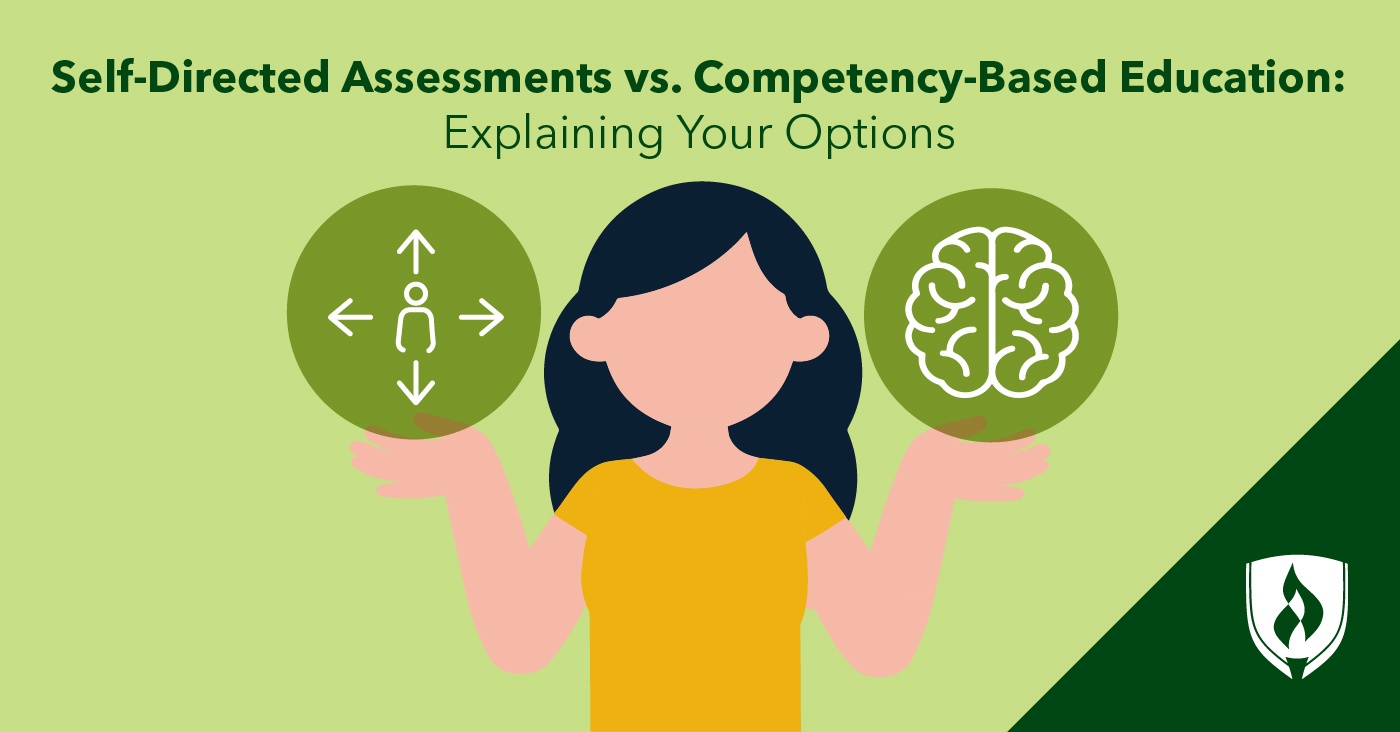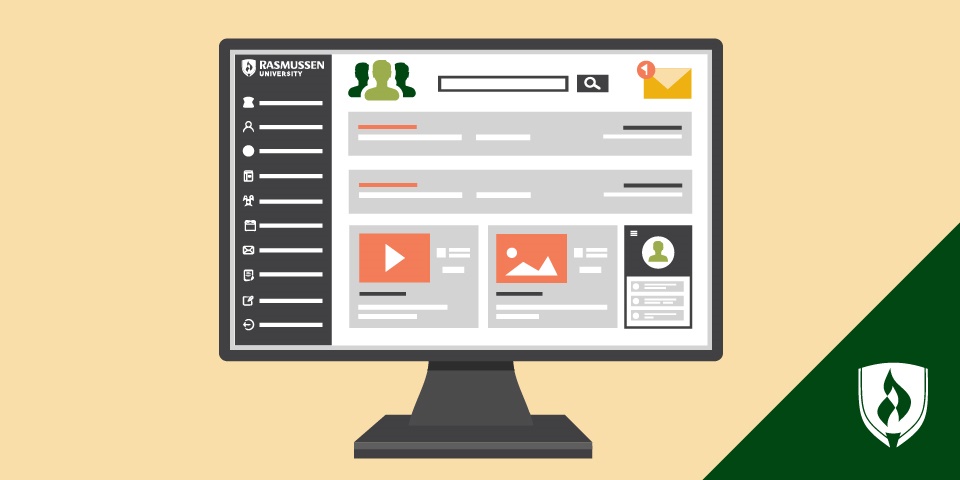Self-Directed Assessments vs. Competency-Based Education: Explaining Your Options
By Will Erstad on 04/27/2020

Getting started in college comes with a lot of questions. What program should I enroll in? What is my class schedule going to look like? Will my credits transfer? Can I handle this? What do all of these strange terms and acronyms mean?
Over time you’ll naturally get a better handle on a lot of these matters, but there are two particularly important (and potentially confusing) concepts that could use clearing up before you get too far along in the enrollment process at Rasmussen University: Empowered Learning® competency-based education (CBE) courses and self-directed assessments.
So what’s the difference, exactly? Let’s get right into it!
CBE vs. self-directed assessments: The basics
Making sense of the differences and similarities between these two concepts will first require us to explain the basics of each.
What is competency-based education?
At Rasmussen University, many programs feature Empowered Learning® competency-based education courses. The term CBE refers to an entire approach to education—one that focuses more on having students demonstrate what they know versus the amount of time they spend attending a course in order to receive credit. This format typically includes hands-on coursework and projects that allow students to demonstrate their mastery of a particular subject. While that might not sound wildly different from what you’ve done in traditional learning formats, there are key differences.
For one, competency-based education courses at Rasmussen University give students a greater level of control over when they complete coursework. For example, if a student wants to try tackling an entire term’s worth of coursework in a week, they have the option to do so as long as they can successfully complete each module. While that may be an extreme example, you can see how having additional flexibility to “work ahead” and complete assignments can help you fit education into a crowded schedule.
Additionally, you’ll find that the type of work and ways you are assessed may be a little different from the methods you’re used to in traditional course formats. For instance, many traditional courses amount to attending lectures, writing a few papers, participating in some discussions and taking a handful of multiple choice tests along the way. While these elements may be incorporated in CBE courses, there is often a strong emphasis on hands-on learning with projects that prompt you to apply what you’ve learned in “real world” scenarios.
So does all this mean you’re on your own? Absolutely not! Students in CBE courses still have dedicated instructors to reach out to with questions, as well as the full array of student support services Rasmussen University offers.
“I can honestly say the instructor made all the difference in my experience,” says Business Management student Marcia Smeby. “He took the time to engage students and reach out at every level. The instructor made the class feel inclusive and encouraged a lot of conversations.”
How can competency-based education benefit me?
One of the biggest practical benefits of a CBE course is that it provides students an additional level of control over how they approach their coursework. You know up front exactly what you’ll need to complete by the end of the term and can tailor your approach accordingly.
You may prefer to make steady progress every week, but we know not every week in your life outside of school is going to be consistent. Maybe you help care for an older family member whose needs fluctuate, or have a custody arrangement where you alternate weekends with your kids. Whatever the case may be, you’ll have the flexibility to take on more work during the slow times and scale back when life gets hectic. As long as the work gets done before the end of the term, you control the approach.
Competency based education courses can also be a boost for students who might have practical experience and skills that haven’t been accounted for in a college transcript. Let’s say you’re pursuing an Accounting degree after years of helping with basic bookkeeping work for a family business. You’ll likely be confident in completing assignments related to this with relatively no additional training. This allows you to focus more of your time and energy on topics you’re less familiar with without having to wait for less-experienced students in your course to catch up.
What are self-directed assessments?
It may seem like a similar concept based on the name, but self-directed assessments are not the same thing as a CBE course. At Rasmussen University, these offerings are one way for students to earn credit from prior knowledge and experiences.
You can think of these assessments as somewhat similar to a “test out” option—but there’s more to it than simply taking a test. These assessments come in the form of a self-directed online module where students complete interactive work demonstrating their proficiency in a subject. Students who choose to take a self-directed assessment have the ability to receive one-on-one guidance from an academic coach.
Each assessment attempt costs $149 and a successful attempt is posted as a test-out (TO) on a student transcript
How can self-directed assessments benefit me?
Self-directed assessments are an excellent way for students to potentially save time and money on their way to earning a degree. These assessments are available in many subject areas covering topics in both upper- and lower-division courses, which means you’ll have plenty of opportunities to try your hand at them throughout a degree program.
Being able to test out of a course here or there might not seem like much, but this can potentially amount to substantial savings and lessen your overall course load if successful.
Looking to learn more?
There’s a lot to take in when considering new approaches to learning. But after reading up on the subject and learning more about how Empowered Learning® works at Rasmussen University, you should have a better understanding of the differences between CBE courses and our self-directed assessment offerings. If you’re looking for more information about competency-based education, check out our article “What Is Competency-Based Education? A Beginner’s Guide for Students.”




